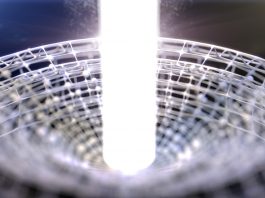Scientists have revealed the basic property of neutrinos, representing an important step towards learning whether neutrinos behave differently in their matter and antimatter forms.
A research team, from the Institute of Corpuscular Physics (IFIC), from the Physics Institute of Other Energies (IFAE-Barcelona) and from the Autonomous University of Madrid, published their findings from their particle physics experiment, T2K, in Nature.
Matter-antimatter symmetry
Located in Japan, the T2K collaboration has published the most accurate data obtained in this field to date: the parameter that governs the rupture of the matter-antimatter symmetry in the oscillations of these particles.
The experiment reveals a basic property of neutrinos that had not yet been measured. This is an important step toward learning whether neutrinos and antineutrinos behave differently and not in a symmetrical way, as described by the laws of most physical phenomena in this field.
Violation of charge-parity symmetry
Charge-parity symmetry, also known as CP symmetry, is not universal. The Big Bang Theory assumes that the universe was created with identical amounts of matter and antimatter. To reach the current situation, there must be a violation of the CP symmetry.
Until this experiment, violation of the CP symmetry had only been observed in the physics of subatomic particles known as quarks, but the magnitude of this violation is not large enough to explain the make-up of our universe.
T2K seeks a new source of violation of the CP symmetry in the oscillations of neutrinos, which would manifest itself as a difference in the probability of oscillation for neutrinos and antineutrinos.
Behind the experiment
The T2K experiment has been created and operated by an international collaboration which is currently composed of over 500 scientists from 68 institutions of 12 countries (Canada, France, Germany, Italy, Japan, Poland, Russia, Spain, Switzerland, United Kingdom, United States and Vietnam).
The experiment is largely funded by the Ministry of Culture, Sports, Science and Technology (MEXT) of Japan. The Autonomous University of Madrid was recently added to the team. Spain funded the research activity through the Ministry of Economy and Finance and the Government of Catalonia, with the support of the National Centre of Nuclear Particles and Astroparticles (CPAN).









